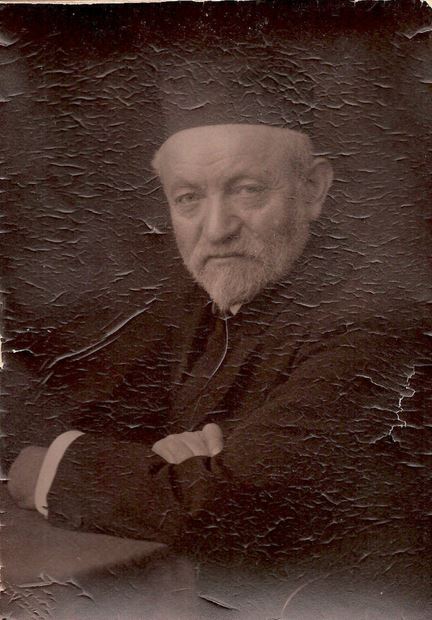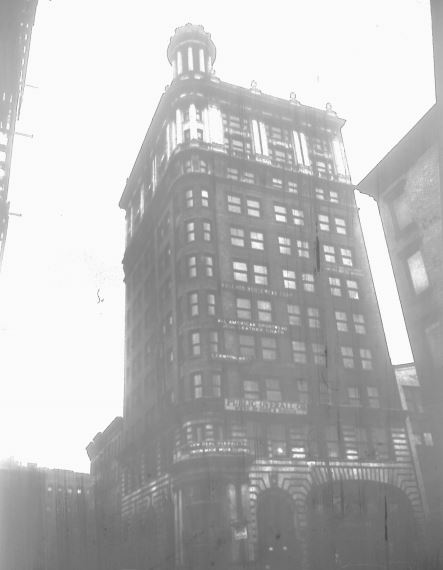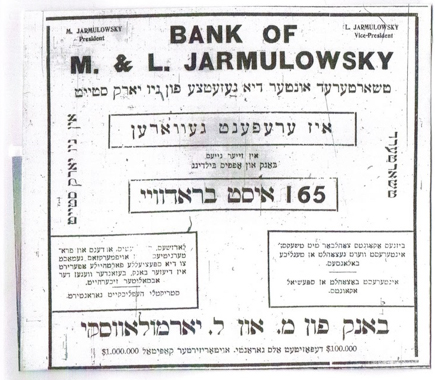Blog Archive
Business Senselessness
The Lower East Side has a long history of family owned and operated businesses, many of which are passed down from generation to generation as time passes. As with most families, sometimes things aren’t always smooth sailing – siblings fight, grandchildren are jailed or sue their own families, and sometimes banks collapse and a mob forces someone from their home. At least that’s what happened to the Lower East Side’s Jarmulowsky family.
Russian born Sender Jarmulowsky was a character as large as his skyscraper; called “The East Side J.P Morgan,” Jarmulowsky was a banker, Talmudic scholar, and man of the people. He founded a bank on the Lower East Side in 1873, and moved to the current location of the Jarmulowsky Building in 1878. At the time, private banks provided services to immigrant neighborhoods and served as middlemen for steamship tickets and provided loans and savings accounts to neighborhood residents.
An honest and conservative businessman, Jarmulowsky grew very wealthy but remained a great philanthropist, who was instrumental to the founding of the Eldridge Street Synagogue and served as its first president. In 1912 Jarmulowsky erected a magnificent 12 story building at Orchard and Canal Streets, which has been called “the first strictly high-class tall bank and office building” in the area, that is “equal in every respect [to] the highest grade banking buildings throughout the city.”
Unfortunately, Jarmulowsky died less than a month after the building was completed. Even more unfortunately, his bank failed only two years later, leaving thousands of its depositors penniless. Jarmulowsky himself had little to do with the bank’s downfall. His seemingly risky business practices – granting loans to clients based on personality rather than financial standing – proved successful.
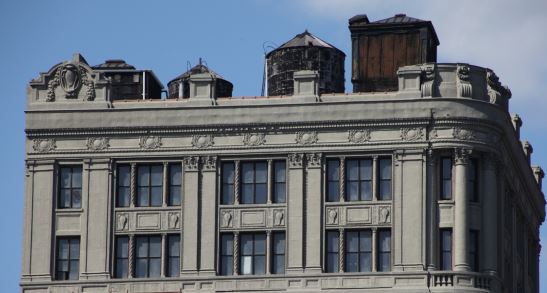
The top floors of the Jarmulowsky Bank Building. Note the beautiful masonry. Photo courtesy the Landmarks Preservation Committee.
It was two of Jarmulowsky’s sons, Albert and Meyer, who caused trouble, making bad real estate investments and mismanaging the institution they had inherited from their father. As World War I raged in Europe, crowds of Lower East Siders rushed to withdraw money for family across the Atlantic. Having squandered the bank’s funds, the Jarmulovskys couldn’t make good on their clients’ deposits.
On October 31st, 1914, a crowd of over 3,000 angry customers gathered on the corner of Orchard and Canal Streets to demand their savings. Five hundred people stormed the house where Jarmulowsky’s son Meyer lived, forcing him and his family to flee over the rooftops. Shortly after the State took over the bank in May 1917, the Jarmulowsky sons were indicted for banking fraud and the bank closed. The building, however, still remains.
It seems as if Sender Jarmulowsky’s descendants were as prone to scandal as their ancestor was successful. Not only were sons Albert and Meyer indicted for fraud after forcing their father’s bank to close, but a third son was sent to Bellevue’s psych ward. And then there was a grandson who was jailed for stealing $1,625 from a jewelry store manager, and (perhaps the strangest of all) a granddaughter, Bertha Clark, whose elopement to a linen salesman in 1911 dragged her family into a messy lawsuit. When the couple was kept apart for 17 days by Clark’s furious parents, the groom demanded $100,000 in retributions.
The most lasting symbol of the Jarmulowsky, the 12 story building in the heart of the Lower East Side, has also had a rather interesting fate. After the Jarmulowsky Bank closed, the building became another bank, and then another. However, the floors above the first and second (where the bank offices were) had a myriad of different manufacturers working inside the large and sunny lofts.
According to the Landmark’s Preservation Committee, “tenants in 1929 included the American Art Manufacturing Company, a maker of lace curtains and scarves; a manufacturer of flannel nightgowns; the Perfect Hemstitching Company; the Public Overall Company; and the Rosebud Housewear Corporation.” In 1945, the building was bought by H.W. Perlman Corporation, a piano manufacturer, who remained until the 1960’s. Beginning in the 1970’s, many of the names of the businesses in the building reflected the East Asian population of the neighborhood. After being vacant for many years, the newly restored building will be a boutique hotel.
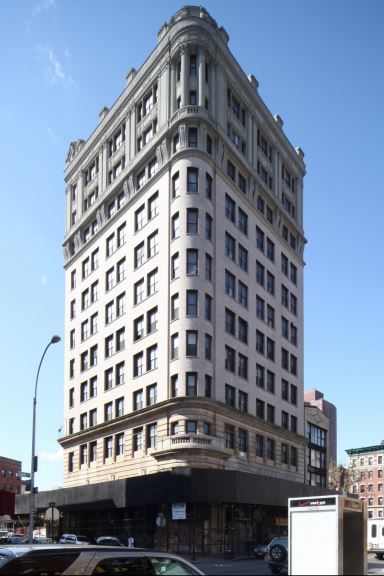
The Jarmulowsky Bank Building in 2007. The top portico was removed in the 1990's and will be restored with the new hotel. Photo courtesy the Landmarks Preservation Committee.
The Jarmulowsky remains one of the Lower East Side’s most notable buildings – you can see it for yourself on our “Outside the Home” walking tour. Starting July 17th spend your Thursday evenings with us. Outside the Home becomes an evening walking tour!
– Posted by Lib Tietjen
